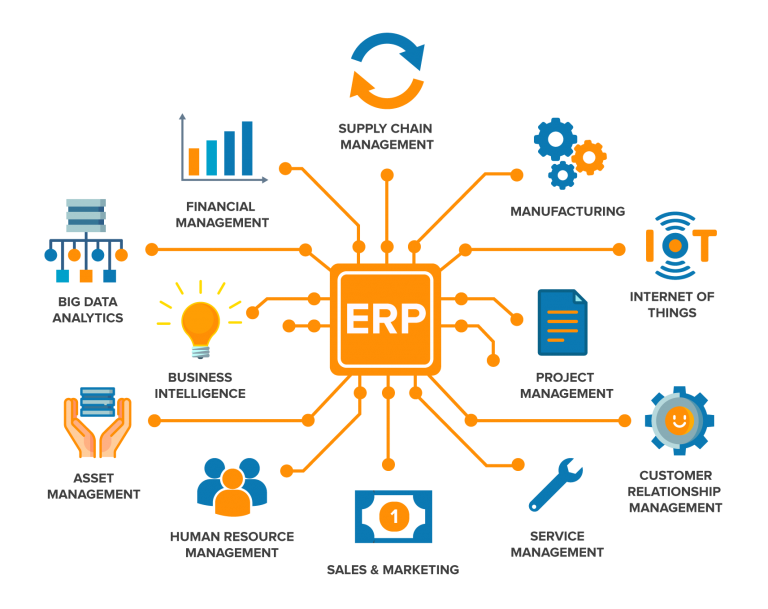Mastering Workflow: A Guide to Choosing the Right Software
When it comes to selecting employee management solutions, it can be easy to feel overwhelmed by the multitude of options available. Here we break down how to choose and some platforms to know about.
How to Choose:
With market factors like increasing compliance requirements and labour shortages, it’s never been more important to choose the right workflow software. We recommend that businesses always start by mapping out the employee lifecycle from end to end. We then suggest reviewing what tools and resources are needed at each step. Two key things to consider are automation and ease-of-use; employees will be able to best utilise a system that’s engaging and straightforward.
Four Platforms to Know About:
As platform-agnostic providers, we can subjectively recommend which services can best suit your business. Below, we've rounded up some of our favorites:
- Deputy
- Offers powerful rostering and timesheet management for larger workforces
- Boasts strong awards management, e.g. overtime, additional entitlements
- User-friendly and engaging for staff
- Adapts to a multitude of industries, including healthcare, hospitality, construction, manufacturing and agriculture
- Bamboo HR
- Comprehensive HR management system
- Ideal for internal HR functions
- Rich in HR-specific features covering areas like recruitment, onboarding and certifications
- Built to seamlessly integrate with payroll, LMS (learning management), and time & attendance
- iPayroll
- Provides an outsourced legal service alongside the HR software
- Ideal for businesses looking to outsource the HR function
- Developed here in New Zealand
- PayHero & Droppah
- Ensures payroll compliance with the Holidays Act
- Integrates rosters and timesheets
- Ideal for SMBs with employees on variable hours
What’s Next?
If you’re interested in increasing your workplace efficiencies through software, drop us a line to connect. We’d love to discuss your options.
Thinking about an ERP upgrade?
If you're running a growing business and thinking about taking things up a notch for some serious expansion, it might be time to explore ERP (Enterprise Resource Planning) software. ERP software helps businesses manage and automate various aspects of their operations, including finance, human resources, supply chain, manufacturing, procurement, project management and more. So, how do you know if you’re ready?
- ERP software is a great fit for businesses on the rise, especially if you're ready to move on from Xero and are now looking for a central system that's rich in industry-specific features - something with all the bells and whistles that you can customise to your heart's content.
- This software is well-suited to companies making the jump to ERP when they've outgrown legacy systems like Accredo, Reckon, Quickbooks, Attache, EXO, GreenTree, Pronto, Sage, Abel and Moneyworks.
For these businesses, we like to deliver ERP with a modern twist. Using API integration, we build solutions designed to leverage other business apps across the cloud and mobile platforms, ultimately creating a much more affordable solution. At ALTSHIFT, we'll also take care of the planning and project management, from system selection and scoping to data migration, testing, training, and ongoing support.

We've guided ERP upgrades for a number of significant local businesses, including Winton, Eurotech Design and National Mini Storage. Winton needed a system that could efficiently consolidate data across all entities, Eurotech's legacy Oracle system lacked inventory control, while National Mini Storage's previous system, Reckon, couldn't handle the growing number of transactions, leading to manual workarounds for processes like bank feeds, accounts payable, and fixed asset registers.
These three particular businesses were all best-suited to MYOB Advanced Business. For Winton, we created a single, integrated setup that automated the consolidation of their 30+ assets and ultimately played a crucial role in its successful IPO listing in December 2021. The solution we created for Eurotech Design has significantly improved inventory management, with an accurate audit trail and streamlined processing - orders are now processed within minutes, reducing errors and enhancing the retail experience. As a result of our upgrade, National Mini Storage has improved cost control, reduced manual efforts, and allowed accurate five-year forecasting - which, in turn, keeps the bank happy.
If you’re interested in an ERP upgrade, let’s get a coffee and we can talk through what options could be best suited to your business.
Successful partnerships – a platform for business success in 2022!
Success in business hinges on working with - and knowing when to call on - trusted partners. And then, long term success relies on continued relationships with those who can adapt to change, consistently deliver and be depended on in times of need. Looking into the evolving business markets and economic uncertainty in the year ahead, we wish you the very best in your trusted partner relationships to help see you through – and if there’s a role we can play in your journey, we’d love to chat.
We’d also like to take the opportunity to acknowledge one of our own successful partnerships - with MYOB - and thank them for our recent 2021 Enterprise Partner Award; we believe stronger ALTSHIFT alliances (a division of BDO Information Systems) bring stronger capacity for us to deliver success for our clients. Lets talk about the range of ALTSHIFT partners we can connect you with in helping drive your business success in 2022!

MYOB Advanced High Achievers
Last month (and before the lock down!) we were graciously hosted by the MYOB Enterprise team for their annual partner conference on the sunny Gold Coast. Apart from the stunning location we were treated to a series of workshops and detailed updates on the MYOB suite. From our perspective we were pleased to see the level of investment in the MYOB Advanced platform (there's no doubt this cloud ERP platform has a big future mid-tier market) and it was great to see a number of new 3rd party integrations on the scene adding to the breadth of functionality.

The conference closed in style high up on the 77th floor of the SkyPoint building (that's 230m in the air!) where as part of our partnership with BDO Information Systems we were pleased to receive the Excellence in Business Development Award for MYOB Advanced (NZ). For BDO Information Systems the award comes 2 years running and is a testament to the quality projects being rolled out by the team.

A great night was had by all and if not for that awful virus we'll be back again next year to defend the silverware. For now the team are head down in MYOB Advanced projects with a number of new sites going live in the new financial year and we're all thankful that we can continue to work in the cloud.
Flicking the switch on your new ERP
The beginning of the end of your ERP implementation project is go-live day, this is where you start to use your new system in your business. The many man hours spent on scoping, configuration, data entry, testing and training amount to the execution of this day. Most business owners fear this day, as it’s execution will make or break the entire project. There are three methods that “go-live” is typically executed with; all-in-one, parallel or phased. Each method has their own positives and caveats, however no one of these methods is the right way to tackle go-live. Your business must decide which method best fits your objectives and resource.
The all-in-one method of going live in your new ERP system is exactly as it sounds. Once all training, configuration and testing is complete, the entire ERP system is switched on and used all at once. Typically with this method, your staff will log out of the old system on Friday afternoon and log into the new ERP on the following Monday morning. This strategy is the quickest way to be fully operating in the new system, and your staff will not have the opportunity to revert to old processes. On the other hand, if there are any errors in the implementation or your staff have not been properly trained then this method carries the biggest risk of disruption.

The parallel method of going live is the act of using both the old and new systems in tandem over a defined time period. Your staff will learn the new system whilst still operating the old system leading this to be the lowest risk of the three methods. The caveat of this method being that your staff will need to twice the amount of work for the same outcome. This can lead to overworked staff and errors between the two systems if close attention isn’t paid. This method would only be recommended for businesses that have the resource capacity to execute.

The phased method of going live differs from the aforementioned methods. In essence, the phased method involves turning on certain modules on the new ERP and switching progressively. For example, you may decide to leave the core ERP functions of your old system on but move your purchasing over to the new system. This strategy averts much of the risk of the all-in-one go live as this is less of a shock to the business and staff. However by the same token running different parts of your business across two systems is inefficient and can lead to confusion among staff and departments. Connections that bring data from the old system into the new system during this phase can be very costly, and only provide the bare minimum ties. There is lower stress and risk involved with this method, however this method also drags out the timeline of your ERP implementation.
There is no one right way to execute go-live day, it is important to assess which of these three methods will provide the least disruption and can be effectively resourced. Working with an ERP implementation consultant like ALTSHIFT will take away much of the pressure of going live. With many successful implementations under our belt, we have the expertise to mitigate the risk of going live. Planning an ERP project, get in touch with us to discuss your options.
What does an ERP implementer do?
When it comes to business software, the options are truly endless. Software to serve a particular purpose can come in all shapes and sizes requiring business owners to make snap judgements on which to purchase. Fortunately a cloud implementer can make this process easier. Cloud implementers are vertical experts that comprehensively understand the wider app ecosystem, and how these business apps can interface with one another. A good cloud implementer has an understanding of the issues you may be facing specific to your business or industry, and how to solve them. These issues you could be facing include:
Process inefficiencies
Manual data entry between systems
Concerns about business scalability
Lacking visibility into core business functions
Low customer service levels
Legal compliance
Vendor/Customer compliance
Unfortunately simply swiping your credit card and purchasing a software package will not exclusively solve these issues, in fact this step is only the beginning. In order to leverage the power of business systems to solve these issues, your business has to undergo a vast transformation to ensure your people and processes are ready for the new system. A good cloud implementer will take the reins of the software implementation, managing it like a project.

This process begins with a consultation, once you start engaging with a cloud implementer they will begin a comprehensive evaluation of the business. This consultation phase looks at what systems and processes are currently in place at your business, in order to get a snapshot of the current situation. They should also during this stage be collecting key metrics about your business, in order to understand how future changes impact the business. They will look to understand how your systems/functions currently talk to each other and start piecing together how any integrations should be set up if applicable. With all of the information collected about your business’s situation, the cloud implementer will begin to recommend a solution. The implementation firm will be able to leverage relationships with the different software vendors to negotiate a contract on your behalf. Once licenses for the software have been acquired, the implementer will begin with the project.

The process of implementing a new system is unique for each business, but generally consists of data entry, configuration and testing. A bulk of that time will be spent cleaning up your pre-existing database, or building a new one from scratch. The exact time this process takes depends on how many customers and vendors you do business with, the number of products (and variants) you stock and any associated production processes that need to be implemented. Once a database has been established in the new system and it has been configured, tests will be conducted on all of the workflows and processes. This testing is performed by inserting false transactions, and could involve multiple systems within your organisation. When testing is complete, the most important component of the implementation begins; change management of the business. Working towards a predefined go-live date, your consultants will begin training all staff on how to operate the new system.
At ALTSHIFT, we have successfully executed many ERP implementation projects with businesses in all kinds of industries. This multifaceted expertise helps us to understand your business goals, and to set in place the platform to allow you to exceed those goals. If your business is thinking of change, get in touch with us for a free consultation.
Calculating the cost of a new ERP system
You may have an ERP system in place at your business such as MS Dynamics, Sage, Pronto, Netsuite, Accredo or one of the many other incumbent solutions. The reality is that this ERP system may not be serving your business as well as it did when it was first implemented. This poses two courses of action:
Continue to maintain your existing ERP system
Implement a modern ERP system and reap the benefits
Granted that committing to a new ERP system can be costly, but how costly exactly? There are plenty of factors involved in implementing a new ERP system from outright hardware purchases to installation of specific software modules. Most ERP pricing models only look at the initial capital outlay for hardware, software and implementation, but fail to account for the ongoing costs relating to running an ERP system.

As no two businesses are the same, the cost of an ERP system is variable dependent on factors such as the number of staff that you have, the scope of the project, whether customisations are required or even the deployment itself. Plenty of software vendors will allow you to buy specific modules on their platform allowing you to just purchase the core ERP module and saving on cost, however one important factor to note is expandability. Check in with your vendor to understand the costs involved with expanding your ERP system as your business needs change. Ideally you would implement the ERP system within the bounds of the out-of-box application, however unique business processes necessitate customisation which can very quickly drive up the cost of your implementation. Customisations need to be added to the ERP in such a way that the software can still be updated without breaking, otherwise each time the ERP software is updated additional coding must be done to ensure it is compatible.
Here is a list of costs you may face relating to the implementation of a new ERP system:
Hardware and related operating systems:
ERP system licensing (SaaS model or up-front)
Process planning, development and documentation
Staff training
Implementation consultation fees

Now that we have an idea what it would cost to implement a new ERP system, here are some direct benefits:
Leaner inventory, less capital tied up in stock
Increased productivity through workflow enhancements
Reduced wastage/spoilage
Less last minute changes causing wage overtime or air-freight
Increased revenue due to better customer service
Decreased time-to-market for new products, increased margins
There are also some indirect benefits that are a little harder to quantify, but still very relevant:
Increased employee retention and productivity through lower day-to-day frustrations
Better information leading to smarter in-market moves (pricing, specials etc.)
There are many different angles to look at when considering the cost of implementing a new ERP system and creating a ROI statement. Just be sure to go through the process, documenting everything as you go along to ensure that all stakeholders have visibility and can clearly understand what the project will achieve. In engaging with an ERP project consultant, such as Alt Shift, they will simplify this entire process for you. If you would like to understand how implementing a new ERP will benefit your business, get in touch with us.
How to select an ERP System
Nothing will impact a businesses ability to maintain long-term growth like the implementation of an effective ERP system. However when it comes to selecting and implementing an ERP system, if you get it wrong you’ll pay the price. Replacing an ERP system is akin to performing brain surgery while the patient is awake and solving a Sudoku. Not only are you severely overhauling every process in place within your business, but you are also attempting to continue trading like normal.
Fortunately it is possible to make this transition successfully, and in fact many companies do manage to implement an ERP system with minimal business disruption. The difference between those companies that do and do not achieve this is the careful planning, management and execution of an ERP project. The implementation of an ERP system should be treated and managed as such to ensure that the scope is understood, and that any risks of disruption are minimised. This rule applies to all, whether you’re a mom and pop shop or a gargantuan multinational.

The first step to take before embarking on the implementation of an ERP system is to clearly define the rationale behind this decision. Things you should be considering will relate to your current system and whether it can foster your business needs now/in the future. Another aspect that should be analysed are the processes within your current system and whether they support your staff. Having to perform workarounds or data entry across different spreadsheets and systems would be an example of an unscalable process that will ultimately cost your business in lost productivity. An inability to respond to your customers with accurate information in a timely manner will result in lost opportunity, and therefore lost revenue. There may be any number of factors pertaining to your unique situation that should be considered to give yourself the ROI of implementing a new ERP system.
Once you have identified the approximate ROI of implementing a new ERP system, you should then take note of some benchmarks to allow you to measure the outcome. Information you could collect about your current situation may include (but not limited to):
Inventory Accuracy %: Inventory Count in System vs. Real Inventory Count
Inventory Sell-Through Rate
Production Lead Time (if applicable)
Quote-to-Order Conversion %
Average Order Fulfilment Time
Average Lifetime Customer Value
This information will be very valuable to you in measuring the impact of your new ERP system and will allow you to set goals of where you need to be.

Once you’ve got your measurable outcomes documented down, the next key step of the process is to achieve buy-in from your staff. This is important as the end users of your current system will have the low-level insight into your business processes in practice that high-level management may not see. With this information you can start forming categories of functionalities; typically these are your mission critical functions, important functions and nice to have but not essential functions. It is a good idea to go into this exercise visualising your measured KPIs and goals to figure out what is most important for your organisation.
Given that most ERP systems will handle core business processes well, the key to selection lies at the fringes - these are the functions specific to your industry or business. At this stage you should begin engaging with software vendors with your unique business requirements. Keep in mind when engaging with vendors that you’re not looking for the product with the most impressive features, you’re looking for an ERP system that provides a solution to your requirements. Working with an ERP project specialist like Alt Shift simplifies this initial phase to one single point of communication with an unbiased view on the different ERP systems available. Your ERP consultant will work with you to provide an assessment and make a recommendation on a solution. Leveraging our relationships with the different software vendors, we will be able to negotiate a contract on your behalf to ensure you get the solution best fit for your business for the best price.
Replacing your ERP System
Your ERP system is ingrained in everything your business does, understandably the notion of replacing your ERP may send shivers down your spine. Yet if the very lifeblood of your business is affecting your agility in responding to market/competitor trends, then quickly the idea becomes a necessity. Since the implementation of a new ERP system is a massive commitment of time and resources, how can you gauge whether a replacement is required?

The first and most important question to ask yourself about your existing system is this: Does my current system support the needs of the business? Aspects you could look at to answer this question include the system’s ability to cater to the bread and butter of your business, the system’s responsiveness and your staff’s ability to leverage the system’s capabilities. Another important factor to consider is whether your current system gives a path for growth into new and innovative technologies (IoT, Business Intelligence, collaboration etc).
If you are heavily reliant on spreadsheets and workarounds in your current system, you leave a lot of headway for your competitors to out-pace you on price, lead-time and customer service. If your current system is unable to foster the growth and change your business needs to keep up, the ultimate cost is lost opportunities which therefore leaves revenue on the table.

The cloud based ERPs of today are impressively flexible and user friendly. They also offer a platform that allows your business to easily adapt and scale as needs evolve over time. The net result of a properly implemented ERP solution will aide you with achieving these objectives:
Increased customer satisfaction
Improved cash-flow and decreased outstanding receivables
Increased opportunities
Decreased costs through efficiencies
Improved sell-through rate (inventory turnover), less capital tied up in inventory
If you are coming to the conclusion that your business may need a heart transplant, get your best people together internally and start identifying the key areas where change needs to happen. After you have properly identified where your trouble lies, you need to determine the correct time to implement. Many ERP projects fall over as the business was not ready for change. However when executed properly, the implementation of a new ERP will take your business to the next level. Alt Shift is an ERP project consulting firm with many successful ERP implementations from all sorts of industries under our belt. Have a chat with us to discuss your business requirements.
